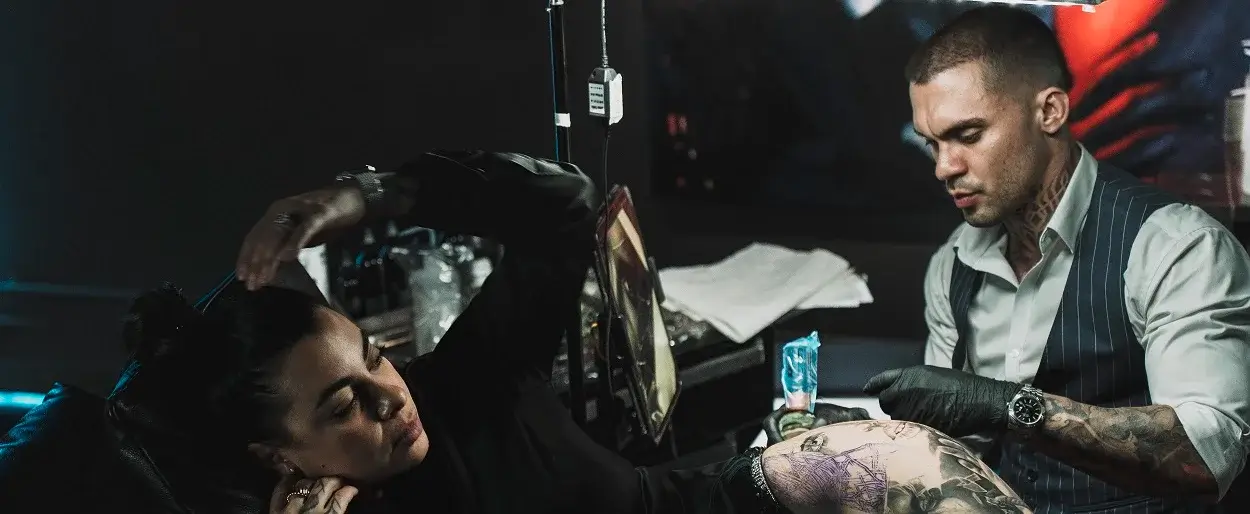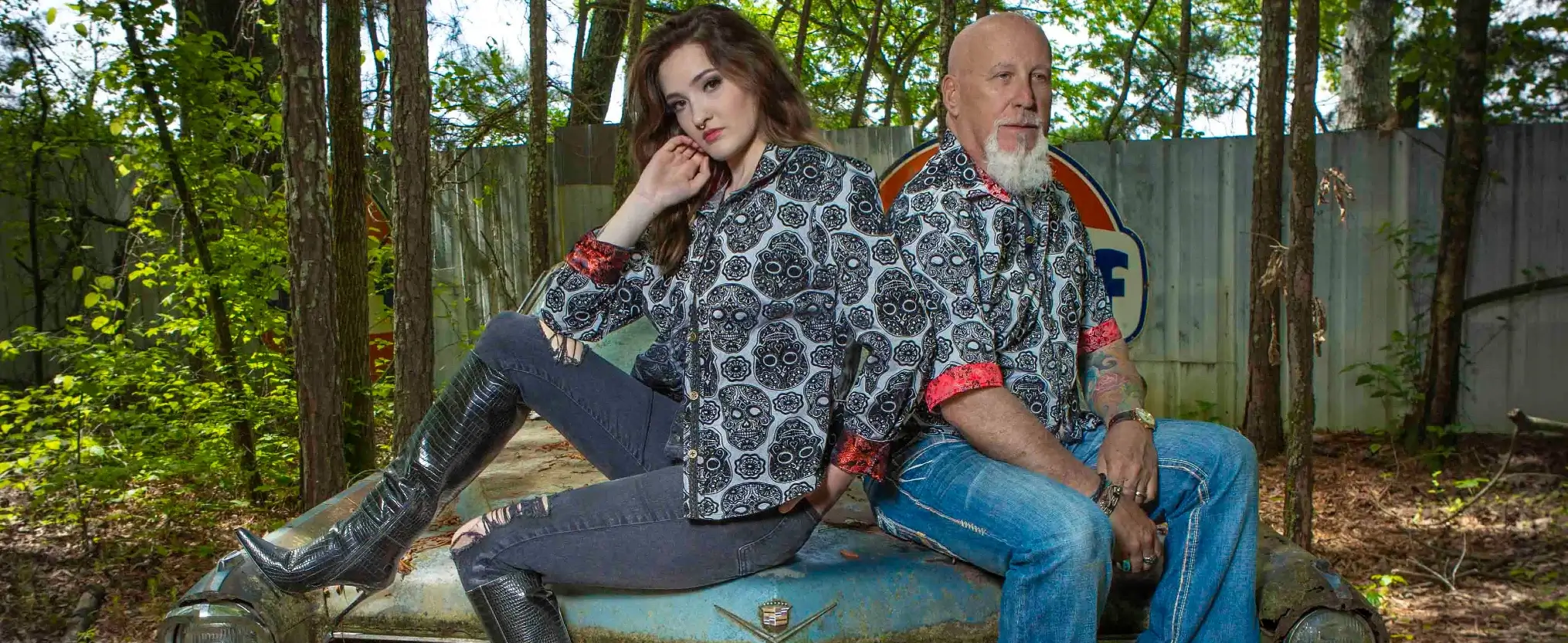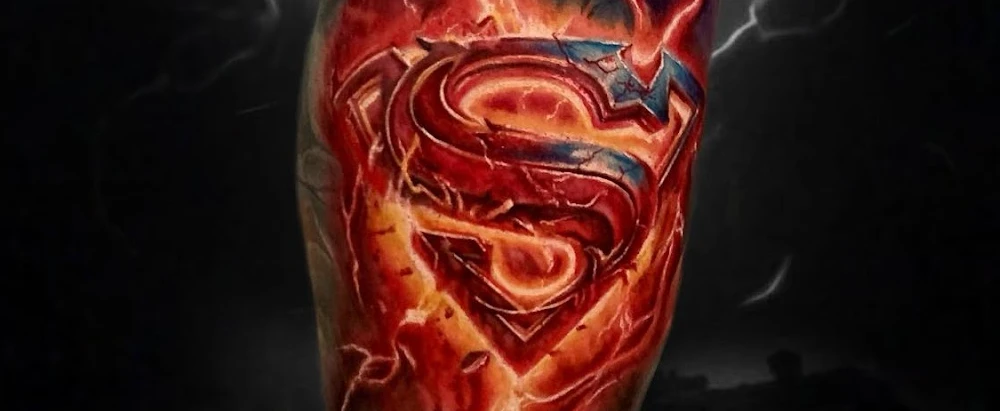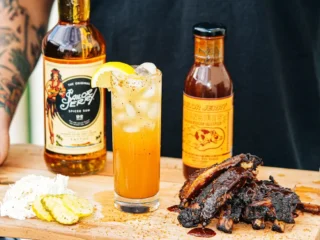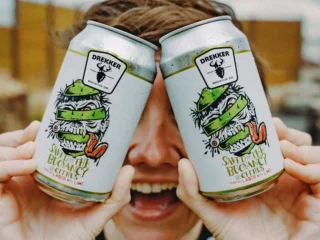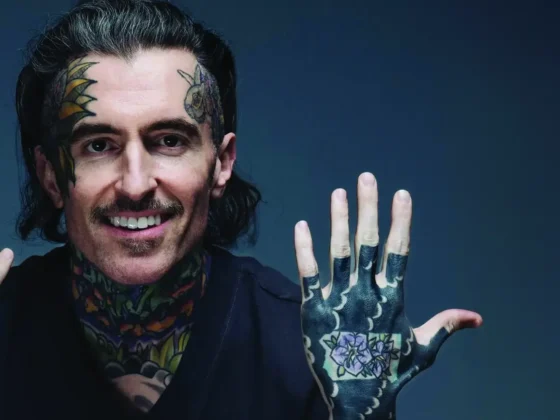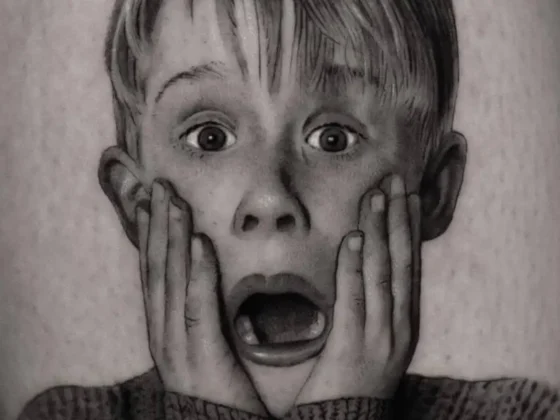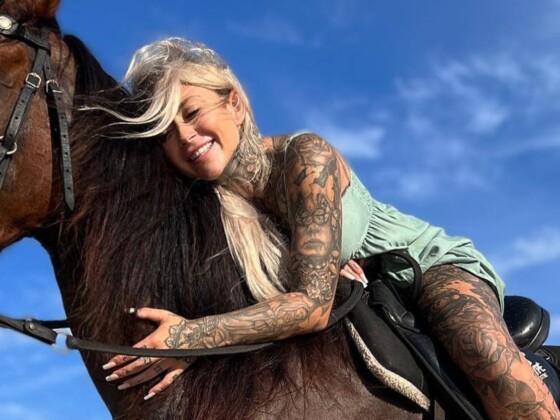Inked Mag Staff
March 6th, 2020
Meet Brazil’s Frederico Rabelo
The Brazilian artist talks inspiration and his tattoo process
Brazilian tattooer Frederico Rabelo has taken the old adage “Bold will hold” straight to heart, his work isn’t going to budge. Rabelo has curated a dedicated clientele base enchanted by his illustrative allure and audacious application of saturation. Beyond his ability to expertly put needle to skin, people are drawn to Rabelo’s work for the complex emotions his pieces evoke and the unique harmony each tattoo has with the individual wearer.
How did you develop your style and which artists were your primary inspiration?
I don’t really believe in an idea of style, especially in a tattoo in which techniques and figurations are frequently confused with style. For me, tattoos are an artistic platform and the way of evolving as an artist is to first evolve as a being. My truth—namely my beliefs, inspirations, inclinations and virtues—is always in constant evolution. And from this complex entanglement of things, the vision I have of myself and of what good I can bring to this world comes about in each tattoo I make. The final image of each project starts there. The clearer the communication of the artist with their truth and their capability of expressing it, the more there is an affirmation of style.
As a tattoo artist, I was deeply inspired by the works of Alexander Grim and Guy Le Tatooer. Also, the work of Brazilian photographer Sebastião Salgado; the writing and books of John Berger, Wassily Kandinsky and Allan Kardek; and the work of Yugoslavian painter Vladimir Velickovic, who is recently deceased.
What role does saturation play into creating a black work tattoo?
There is a moment or an element that makes the tattoo happen when its successful. This happening is sometimes great and transcends our explanations—almost always obvious, and there we have something really special. In other times, more frequently, we have successful projects on which we can identify where we got right and made the tattoo happen. In most of my work, these moments happen with the placement and by the use of the black. Black is a very dynamic color, which has been through many significations and has even not been considered a color. I study the history of black, and its first registry happens even before the arrival of the world, where in the beginning of the beginning everything was “dark over the face of the abyss” black then comes as the primordial color but also as deadly and void. From the 14th Century on, black started to become an elegant and usual color. Nowadays, black has become basic and neutral according to its uses in global culture. For me, black is calm but also powerful. It’s not dark, nor light. It is dense, serious and dynamic. Above everything dynamic, like water. Water can heal and be peaceful, or it can destroy everything. Black is like water.
What’s your process for creating a tattoo from start to finish?
The process varies a lot. In general, I think first about the body and then about the project’s figuration. I generally let the body guide a great part of what’s to come. I use very simple lines and spaces that it offers me, find the biggest possible diagonal, some flow/anti-flow lines, and possible highlighting areas, but only after it’s done I start thinking about the art. For the figuration, it depends on how much connection and repertoire I have over what I’m about to portray. It’s important for me to think that things have a soul and drawing or tattooing them is a chance to make this energy visible. For that, I start by doing several drafts of the smallest possible part of the object. For example, if I’m going to draw a bird, I start studying the claws, then the feet, after that the feathers and later all the plumage, and thus having the whole bird and the possibilities I see in it. This way I become free and have that figuration subordinate to my interests. It’s also important to take into consideration that the body establishes cultural, anthropological and social relations, in its different parts and gender. Relations that make, for example, the same drawing have different impacts if tattooed across a woman’s breast or a man’s arm. It’s fundamental to locate ourselves in front of these relations, because it is having the conscience and the imposition over all these things that we get the chance to interfere in them and create the “reality”— the values, beliefs, systems and organizations in which we insert ourselves to evolve and live.
Editor's Picks
Bridging Classical Art and Modern Tattooing
Esteban Rodriguez brings the discipline of classical fine art to the living canvas of skin, creating hyper-realistic tattoos that merge technical mastery with emotional depth.
Show Your Ink Fashions Brings Custom Style to Tattoo Culture
Show Your Ink Fashions creates custom shirts designed to showcase your tattoos as wearable art, blending fashion with personal expression.
The Ultimate “Superman” Tattoo Roundup: Just in Time for Superman’s Return to Screens
With Superman’s big return to theaters, fans are revisiting some of the most iconic ink inspired by the Man of Steel.


